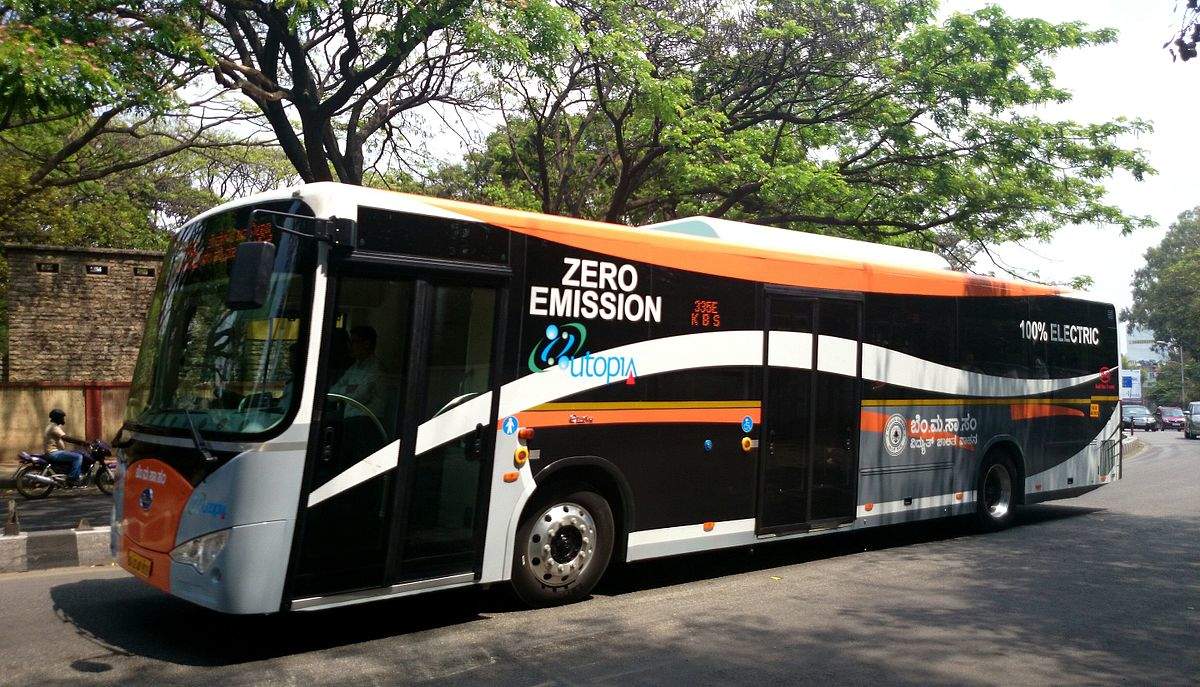The global electric vehicle market is expanding rapidly. The total number of electric cars has reached three million units globally. Around one million new electric cars were sold in 2017 alone, representing growth of 54% as compared with 2016. The total number of electric buses increased to 370,000 units and electric two-wheelers reached 250 million by 2017. Electric vehicle deployment is mostly driven by policy. Electrification targets and key initiatives taken by India indicate growing electric vehicle traction in the country in the coming years.
The electric vehicle market is gaining momentum in India due to the ambitious plans and initiatives of the government. Public authorities in India have made a number of electric vehicle-related policy announcements over the past few years showing strong commitment, concrete action, and significant ambition for the deployment of electric vehicles in the country. In 2012, the National Electric Mobility Mission Plan (NEMMP) 2020 was established to promote hybrid and electric vehicles. Under the NEMMP 2020, an incentive scheme, Faster Adoption and Manufacturing of Hybrid and Electric Vehicles (FAME), was launched in 2015 to reduce the upfront purchase price of hybrid and electric vehicles and to stimulate their early adoption. In May 2017, the National Institution for Transforming India outlined a vision for the transformation of mobility in the country, proposing a set of actionable and specific solutions to accelerate India’s leadership in advanced mobility.
In early 2018, the Ministry of Power launched the new National Electric Mobility Programme to focus on creating the charging infrastructure and a policy framework to set a target of more than 30% electric vehicles by 2030. The program is being implemented by Energy Efficiency Services Limited (EESL), which facilitates demand creation for electric vehicles in India by promoting public procurement. EESL seeks to create a market for electric vehicles through its business model of aggregation of demand and bulk procurement. EESL had signed contracts to procure 10,000 electric vehicles in 2017 and issued a new tender for procurement of another 10,000 in March 2018 under the FAME scheme. The new cars will replace the petrol and diesel cars used by the government and its agencies in the near future. The total number of vehicles used by the government and its agencies is estimated to be 500,000. Along with the procurement of electric vehicles through international competitive bidding, EESL selects a service provider agency through competitive bidding to carry out end-to-end fleet management of the procured vehicles for the government customers concerned. Apart from continuing to aggregate demand, EESL is also responsible for the coordination between the appointed agencies, monitoring and supervision, complaint handling, and payments.
Until now, charging infrastructure was deemed as electricity distribution, which is a licensed activity. This license requirement stalled the market access of small-scale players. In early 2018, an interim arrangement was set up to enable charging stations to operate without a license. The power ministry categorised charging batteries of electric vehicles as a service, allowing charging stations to operate without a license to encourage the use of electric vehicles.
Currently, the government’s electric vehicle fleet consists of the Mahindra e-Verito and the Tata Tigor EV. Both these companies delivered their first set of electric vehicles to the government as part of EESL’s initiative to procure 10,000 electric vehicles in late 2017. Various other automobile manufacturers have started working extensively toward electrifying or introducing electric vehicles in their portfolio. Hyundai has confirmed that its electric vehicle will debut in India by 2019. Maruti Suzuki has also announced that it will launch its first electric vehicle in India by 2020.
Meanwhile, many companies have started setting up charging stations in their captive facilities or in public places. Tata Power has set up three fast charging electric vehicle stations at the Hyderabad campus of the information technology firm Cognizant. This was followed by the launch of Mumbai’s first electric vehicle charging infrastructure, with nine charging stations across significant locations. Finnish state-owned company Fortum has set up two electric vehicle charging stations at Indian Oil outlets for the general public in Hyderabad. The company has plans to set up 150–200 charging points in the country in the near future. In 2017, Nagpur became the first Indian city to get an electric vehicle charging station. The charging station was opened at one of Indian Oil’s stations in collaboration with cab aggregator Ola for the first stage of its pilot project in Nagpur launching 200 electric vehicles including buses, auto and cars. The solar power developer ACME Group provided Ola with EcoCharge battery swapping and charging stations.

US Tariffs are shifting - will you react or anticipate?
Don’t let policy changes catch you off guard. Stay proactive with real-time data and expert analysis.
By GlobalDataIndia is also a member of the Electric Vehicles Initiative (EVI) multi-governmental policy forum. The EVI forum was established in 2009 to accelerate the deployment of electric vehicles worldwide and facilitate exchanges between policymakers and various stakeholders. Countries currently active in the EVI include Canada, China, Finland, France, Germany, India, Japan, Mexico, the Netherlands, Norway, Sweden, the UK and the US. The initiative is jointly led by Canada and China. The International Energy Agency serves as the EVI coordinator.
Despite the ambitious plans and initiatives of the government, the lack of consistency among visions and achievements at different times and by different sectors suggest that India needs to ensure greater coordination in the deployment of electric vehicles as it moves forward.




